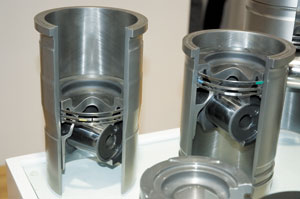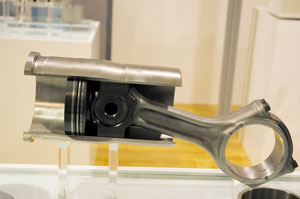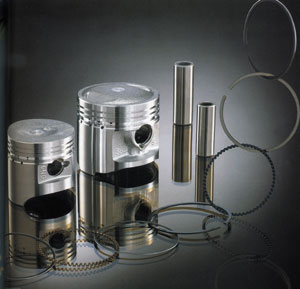China's Commercial-vehicle Piston Market Looks to Pump Steadily in 2009
2009/04/10 | By CENS | ZHEJIANG DAOSEN LOCOMOTIVE PARTS CO., LTD.The capacity of China's commercial-vehicle engine piston market was estimated at 26 million units in 2008, half of which for the OE market and the other half for the aftermarket. Last year was tumultuous for the market, which saw booming business in the first half before cooling due to the implementation of the national 3rd-stage fuel-efficiency and emissions standards in July, followed by being swept by the global financial tsunami that peaked in September.

Being literally an indispensable part of the rapidly growing auto market in China, the scale of the commercial-vehicle piston segment has also expanded alongside in recent years. However, the piston makers have also witnessed continuously sagging profits due to unrelenting challenges in terms of cost, capital and safety standards.
Rising Costs
Makers of commercial-vehicle pistons in China have been struggling to cope with rising costs incurred on various fronts.
The prices of the basic metals for the auto industry as well as precious metals have jumped again, following the previous surge in the fourth quarter of 2005. The prices of copper, zinc, and lead have hit record highs, while those of aluminum and gold have also risen to 10-year highs, imposing heavy cost burden on the piston suppliers.
Instead of passing rising costs onto car buyers and in order to sustain profits amid the long-term downtrend in prices in the Chinese auto market, automakers and engine makers have been cutting cost by looking upstream-demanding parts suppliers, including piston makers, to reduce prices by 5% annually, seriously compromising the latter's margins.
To meet the stricter 3rd and 4th national fuel-efficiency and exhaust emission standards, the auto industry and market in China demand piston makes to conform to increasingly stringent quality specs, forcing piston suppliers to invest in R&D to upgrade products, again a cost burden.

Due to the prevalence of stabilizing financial policy and tighter monetary policy adopted by the Chinese government as a form of macro-economic control likely in response to the global financial crisis, piston makers have difficulty obtaining sufficient bank loans to fund capacity expansion and technological upgrading.
Market Pressure
With the gradual implementation of 3rd and 4th national fuel-efficiency and emissions standards, the market pressures engine makers to upgrade products, seriously straining the capacities of major piston suppliers to turn out items that meet such stricter standards, which is especially challenging when easy financing is unavailable to raise production and technology.
Major piston suppliers in China also face two-pronged competition, one from leading multinationals, which have gradually completed deployment in the Chinese market backed by strong technology, established brand image, international sales channel, and complete services; and the other from native second and third-tier piston makers in the coastal provinces.

The piston industry in China is suffering relatively less from the global financial tsunami, evidenced by its export performance in the first two months this year, albeit the export of pistons will inevitably weaken in 2009. The outlook for domestic sale is rosier, since the local commercial-vehicle market is likely to bottom out in the first quarter, thanks to the implementation of the various economic stimulus programs by the Chinese government. China's commercial-vehicle piston makers are forecast to ship 29 million units in 2009, 18 million for the OE market and 11 million for the aftermarket.




